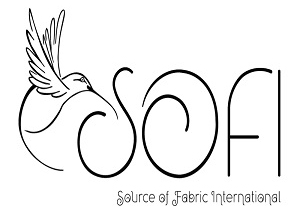In the vibrant world of fashion and design, wholesale fabric printing stands out as a game changer. It empowers businesses to create unique textiles that reflect their brand and vision. With advancements in technology, custom prints are more accessible than ever, allowing designers to bring their ideas to life without breaking the bank.
From small startups to established brands, the demand for high-quality printed fabrics is on the rise. This trend not only enhances creativity but also fosters sustainability by enabling local production. As the market evolves, understanding the ins and outs of wholesale fabric printing becomes essential for anyone looking to make their mark in the industry. Whether it’s for apparel, home decor, or accessories, the possibilities are endless.
Overview of Wholesale Fabric Printing
Wholesale fabric printing allows businesses to create custom designs on fabrics in large quantities. This process combines advanced technology with accessibility, making it an attractive option for designers and manufacturers.
Definition and Process
Wholesale fabric printing refers to the mass production of printed fabric for various applications. The process involves several steps:
- Design Creation – Designers create digital artwork or patterns suited for the intended fabric.
- Printing Method Selection – Businesses choose a printing method, such as dye sublimation, direct-to-garment, or screen printing, depending on their needs.
- Fabric Preparation – Fabrics are prepped to ensure optimal printing quality.
- Printing – The chosen printing technique applies the design to the fabric.
- Finishing Touches – After printing, fabrics undergo treatments like cutting, sewing, or finishing to meet specific project requirements.
Types of Wholesale Fabric Printing
Several types of wholesale fabric printing serve different needs:
- Dye Sublimation – Ideal for polyester fabrics, this method uses heat to transfer dye onto the fabric, resulting in vibrant colors and high detail.
- Direct-to-Garment (DTG) – This technique prints directly onto clothing, suitable for short runs and intricate designs.
- Screen Printing – Common for large quantities, this method involves creating a stencil and applying ink through it, ideal for bold designs.
- Digital Printing – This type uses inkjet printers to create designs on various fabrics, suitable for detailed prints and small batches.
- Rotary Screen Printing – This process uses cylindrical screens to print continuously on fabrics, often employed for large volumes.
These printing types cater to diverse demands in the fashion and design sectors, allowing businesses to meet their creative objectives effectively.
Benefits of Wholesale Fabric Printing
Wholesale fabric printing offers significant advantages for businesses in the fashion and design industry. This method allows for efficient production and access to a variety of solutions for custom printing needs.
Cost-Effectiveness
Cost-effectiveness stands out as a key benefit. Buying in bulk reduces the price per unit, making it more affordable for businesses. Companies save on raw material expenses and production costs when they order in bulk quantities. This can lead to increased profit margins. Additionally, the reduced turnaround time of mass printing means faster delivery to customers, further enhancing the business’s bottom line.
Customization Opportunities
Customization opportunities play an important role in wholesale fabric printing. Businesses can design fabrics that reflect their unique brand identity. Options include colors, patterns, and fabric types tailored to specific needs. This flexibility allows companies to differentiate their products in a competitive market. Custom prints also support niche markets, attracting specific customer demographics. By offering personalized fabric options, businesses enhance customer satisfaction and loyalty.
Key Players in Wholesale Fabric Printing
Wholesale fabric printing includes several key suppliers and manufacturers, each providing unique services that cater to different needs.
Popular Suppliers
- Printful: Known for on-demand printing, Printful provides direct-to-garment and all-over printing options. It offers an easy-to-use platform for businesses looking to sell custom products.
- Spoonflower: Spoonflower focuses on custom fabric printing with diverse patterns and designs created by independent artists. Users can print their designs or choose from a wide selection of existing options.
- Fabric on Demand: This supplier offers custom fabric printing in various materials. It supports small orders and allows users to print their designs, enhancing creative possibilities.
- Avery: Specializing in iron-on transfers and heat transfer vinyl, Avery provides fabric printing solutions for DIY projects, making it accessible for smaller businesses.
Comparison of Services
| Supplier | Printing Methods | Min. Order Quantity | Fabric Options | Custom Design Capability |
|---|---|---|---|---|
| Printful | DTG, All-over | None | Multiple (cotton, canvas) | Yes |
| Spoonflower | Digital Printing | 1 yard | Cotton, linen, polyester | Yes |
| Fabric on Demand | Digital, Dye Sublimation | 1 yard | Various natural fibers | Yes |
| Avery | Iron-on, Vinyl | None | Transfer media | Limited |
Each supplier offers a range of services tailored to various business needs. Printful’s model supports seamless integration for online stores. Spoonflower’s community of artists allows for unique customization. Fabric on Demand caters to those needing smaller quantities, while Avery provides easy tools for at-home projects. Understanding these differences helps businesses choose the right supplier to match their specific goals.
Challenges in Wholesale Fabric Printing
Wholesale fabric printing faces several challenges that can impact the quality and efficiency of production. Addressing these issues is crucial for businesses aiming to succeed in this market.
Quality Control Issues
Quality control remains a significant challenge in wholesale fabric printing. Variability in printing methods and materials can lead to differences in color accuracy, texture, and durability. Ensuring consistent standards requires careful monitoring during the printing process. Regular checks and testing of samples help maintain product quality and reliability. Inconsistent materials can also result in mismatched batches, which affects overall production efficiency.
Environmental Considerations
Environmental concerns play a critical role in wholesale fabric printing. The use of certain inks and dyes can lead to pollution and waste, raising questions about sustainability. Some printing processes consume large amounts of water and energy, contributing to resource depletion. Businesses are encouraged to explore eco-friendly options, such as water-based inks and organic fabrics, to reduce their environmental footprint. Implementing sustainable practices not only benefits the planet but also aligns with the growing consumer demand for green products.
Conclusion
Wholesale fabric printing is revolutionizing the way businesses approach textile production. By leveraging advanced technology and customizable options, companies can produce unique linen fabric, cotton fabric, and bullet fabric that resonate with their brand identity. This not only meets the growing demand for high-quality prints but also supports sustainability through local manufacturing practices.
As the industry continues to evolve, embracing eco-friendly methods will become increasingly vital. Businesses that prioritize quality control and environmental responsibility will likely thrive in this competitive landscape. Ultimately, wholesale fabric printing offers an exciting opportunity for creativity and innovation, making it an essential tool for any designer or brand looking to stand out. Whether working with bolts of fabric for large-scale production or small-batch custom designs, the possibilities are endless.
Frequently Asked Questions
What is wholesale fabric printing?
Wholesale fabric printing is the mass production of printed fabric tailored for various applications in the fashion and design industry. This process includes creating designs, selecting printing methods, preparing the fabric, and adding finishing touches to meet specific business needs.
How has technology impacted wholesale fabric printing?
Advancements in technology have made custom prints more accessible and affordable for businesses. This allows companies to produce unique textiles that align with their brand vision, fulfilling the growing demand for high-quality printed fabrics.
What are the benefits of wholesale fabric printing?
Wholesale fabric printing offers several benefits, including cost-effectiveness from bulk purchasing, customization for unique brand identity, and faster delivery times. These advantages also help improve profit margins and enhance customer satisfaction.
What types of printing methods are used in wholesale fabric printing?
Common methods include dye sublimation, direct-to-garment (DTG), screen printing, digital printing, and rotary screen printing. Each method is suited for different needs and capabilities, allowing businesses to achieve their desired outcomes.
Who are the key players in wholesale fabric printing?
Key players include suppliers like Printful, Spoonflower, Fabric on Demand, and Avery. Each offers unique services, printing methods, and customization options tailored to help businesses find the right fit for their needs.
What challenges do businesses face in wholesale fabric printing?
Businesses may encounter quality control issues, such as inconsistencies in color and texture due to varying printing methods. Environmental concerns regarding inks and dyes also pose challenges, making it important for companies to monitor quality and adopt sustainable practices.
How can businesses ensure sustainability in wholesale fabric printing?
To promote sustainability, businesses can use eco-friendly practices, such as opting for water-based inks and organic fabrics. This aligns with consumer demand for sustainable products while reducing the environmental impact of fabric production.


